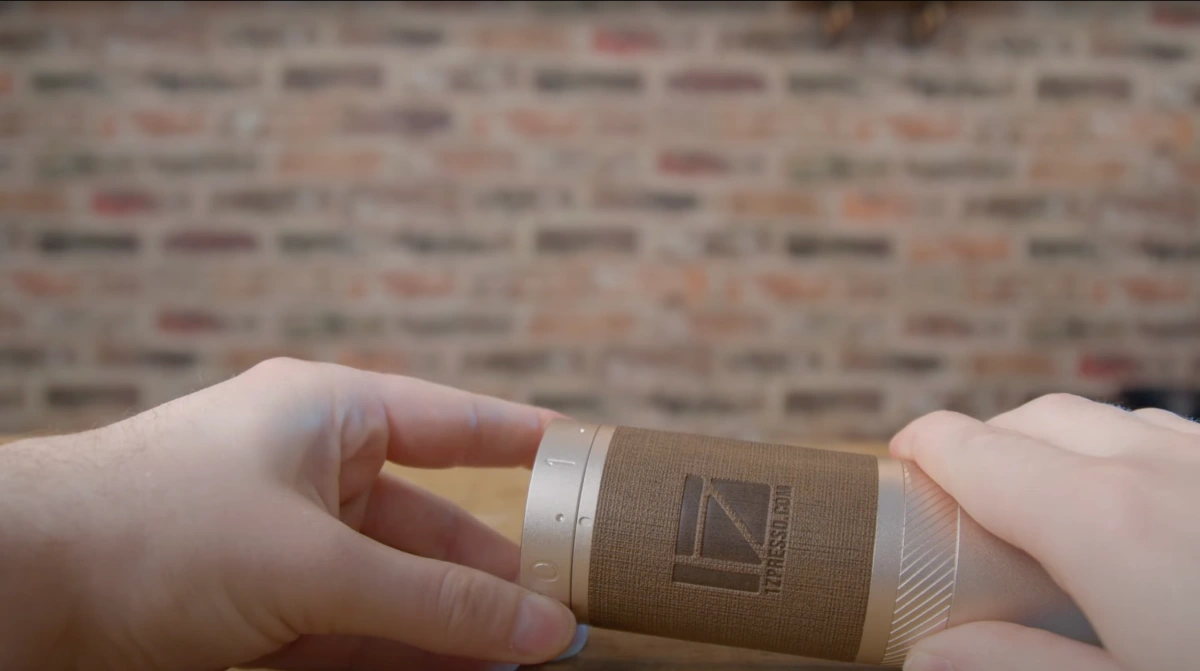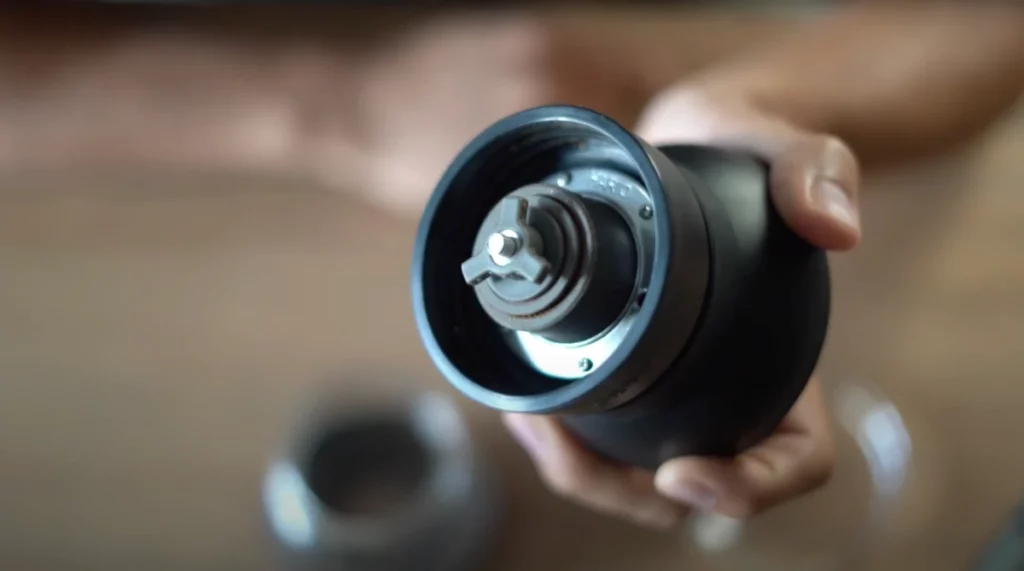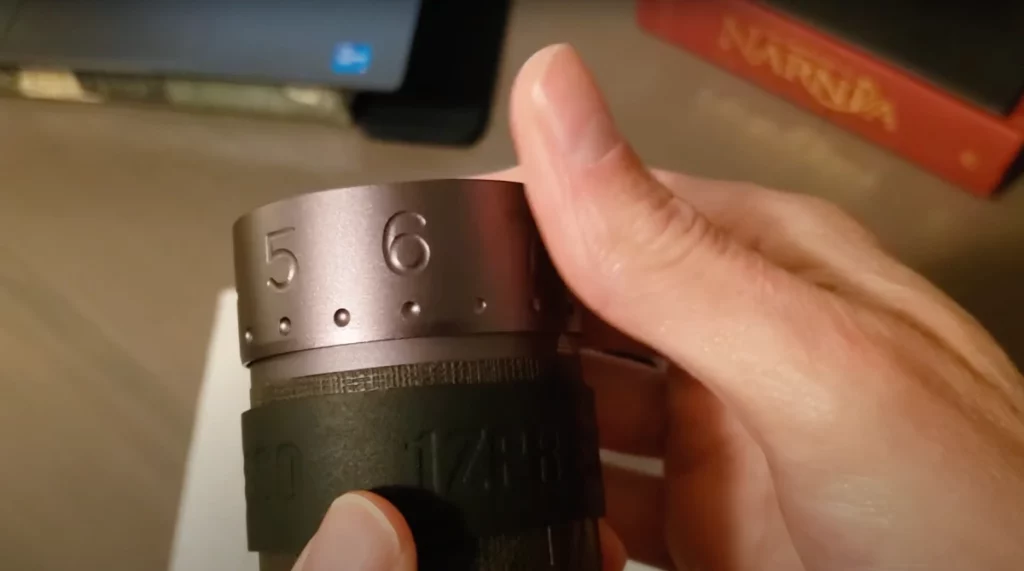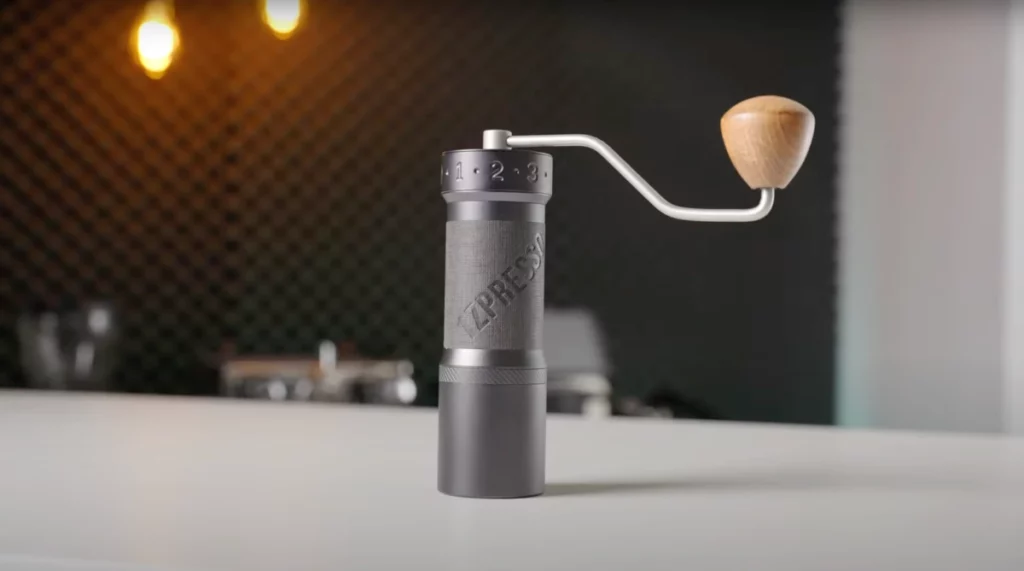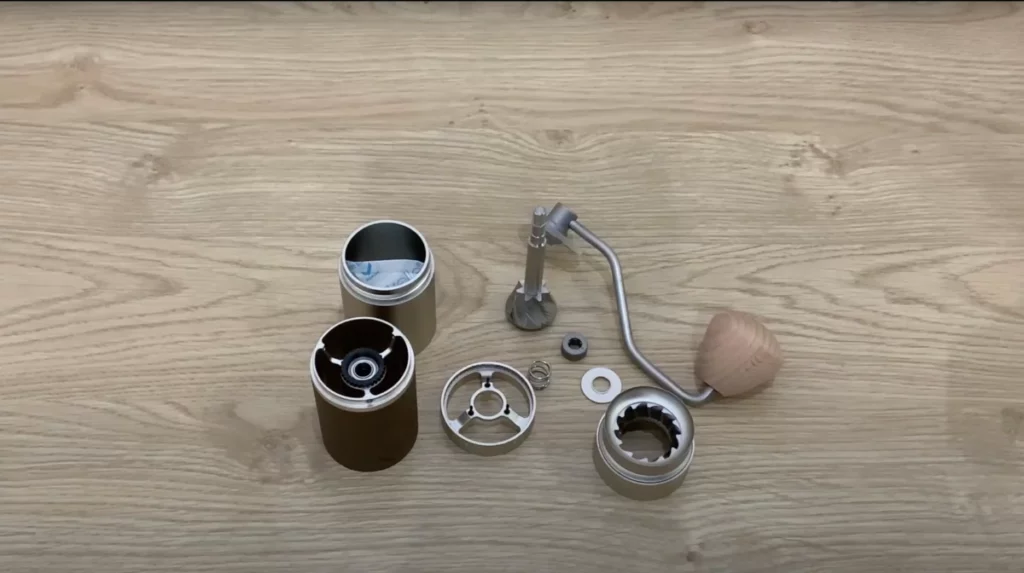Considering a manual coffee grinder but worried about the time and effort required? You’re not alone. Many are daunted by the perceived complexities of grind size, burr quality, and the manual labor involved.
In this guide, I’ll show you how to use a manual grinder, as well as highlighting pitfalls to avoid. From mastering the mechanics of manual grinding to optimizing your technique for speed and consistency, I’ll provide actionable tips to streamline the process and simplify maintenance.
Choosing The Grind Size
The first thing to do when using a hand crank coffee grinder is to find the adjustment dial for setting the grind size. Different grinders use different adjustment mechanisms that can be either internal or external, and this distinction can significantly impact the user experience. I personally prefer the UX with external adjustment rings.
Internal Adjustment Mechanisms:
- Internal Adjustment: Located inside the grinder, this mechanism features predefined settings and is usually located just above the catch cup. You’ll need to disassemble part of the grinder to make changes, which can be less convenient but offers stable, locked-in settings.
External Adjustment Mechanisms:
- Micro-Metrical Adjustment: Often found on the exterior of higher-end models, this mechanism allows for both predefined and minute adjustments without the need to disassemble any part of the grinder.
- Collar Twist: Some grinders feature a simple collar that you twist to adjust the grind size. This is my favorite adjustment mechanism.
Grind adjustments can be stepped or stepless (1). Stepped simply means there are a set number of adjustments on the grinder. Some brands like 1Zpresso might have as many as 300 settings each of which is one step or click on the grinder.
Stepless on the other hand refers to grinders with an infinite number of settings. Where as stepless grinders have a finest and coarsest setting, stepless grinders have infinite settings.
Adjusting the grind size
Setting the right grind size is a key step in using a manual coffee grinder. Follow these simple steps:
- Decide on the grind size you want. A fine grind is good for espresso, while a coarse one works well for French press coffee.
- Locate the adjust ring on the grinder.
- For a finer grind, turn this ring to the right or clockwise.
- If you’re after a coarser ground, go left or counter – clockwise.
- Make sure to put back the locking ring right after you adjust.
- Try out a medium grind first. Then, change it up based on what tastes best to you.
Most grinders come with recommended settings that you can use as a starting point for dialing in. Here’s a rough guide on grind settings that you can use:
| Brew Type | Grind Size | Looks Like |
|---|---|---|
| Turkish Coffee | Ultra Fine | Flour |
| Espresso | Fine | Powdered sugar |
| Aeropress | Fine to Medium | Table salt |
| Moka Pot | Fine to Medium | Table salt |
| Pour Over | Medium | Coarse sand |
| Siphon | Medium | Coarse sand |
| Drip Coffee Maker | Medium to Coarse | Bread crumbs |
| Chemex | Medium to Coarse | Sea salt |
| French Press | Coarse | Peppercorns |
| Cold Brew | Extra Coarse | Small pebbles |
Loading the beans
After picking the appropriate grind setting, the next step is to put the coffee beans into the hopper. Weigh out the appropriate amount for your brew, then follow these steps:
- First, take out the hand crank from the top of your manual coffee grinder.
- Then, pull off or open the top of your grinder to make way for the coffee beans.
- Get your whole coffee beans ready. Make sure they are fresh to ensure you get the best tasting coffee (2).
- Put back on or close up your grinder’s top securely so no beans can bounce out while grinding.
Grinding the coffee
Once the hopper is loaded and you’ve chosen the right grind setting, we’re ready to start grinding.
Using a manual grinder is as simple as turning the handle repeatedly until all the coffee is ground. The grounds go into a catch cup underneath the grind chamber. This is normally attached using a screw-on system or magnetically.
There are a few things to note:
- The roast level of your coffee will impact the grinding experience. Lighter roasted coffees tend to take more time and effort whereas darker roasts are more forgiving.
- The finer the grind, the more effort will be required. Espresso and Turkish coffee are notoriously difficult with some hand grinders, hence why it’s important to choose the right one.
- Many hand grinders are built specifically for one style of grinding. Some are dedicated to espresso while others are tailored to filter coffee grinding.
- The quality of the grinder makes a huge difference. The best manual coffee grinders can grind a dose of espresso in less than 30 seconds. Lower quality ones might take 5 minutes and a lot of elbow grease.
- Spritzing the beans with a little bit of water before grinding can help to reduce static and improve performance.
Cleaning and maintenance
Maintaining the longevity and performance of your manual coffee grinder hinges on consistent and appropriate cleaning. Here’s how to go about it:
- Avoid using water on steel components as it can lead to rust. Instead, use a soft brush to remove residual coffee particles. Many grinders – especially at the higher end – come with a maintenance kit included.
- If your grinder features ceramic conical burrs (3), a weak detergent and a toothbrush can be effective for cleaning. However, ensure that all detergent is thoroughly rinsed off.
- Regularly brush out the grind chamber and burrs. These are critical components that directly affect your grind quality.
- For a deep clean, carefully remove the burr blades and use your cleaning brush to get into the crevices. Reassemble carefully, ensuring all parts are dry and free from any cleaning agents.
- For external cleaning, a dry cloth is usually sufficient. If you must use a cleaning agent, opt for a mild soap and ensure it does not come into contact with steel parts.
Why Use a Manual Coffee Grinder?
If you’re contemplating the switch to a manual coffee grinder, there’s more at stake than just aesthetic appeal. These compact devices offer a host of advantages that go beyond their vintage charm:
- Smaller Footprint: Manual grinders take up less space, making them ideal for smaller kitchens, travel, or even office use.
- Portability: Their compact size and lack of electrical components make them perfect companions for camping trips, vacations, or any coffee adventure on the go.
- Performance Value: When it comes to grind consistency and quality, hand crank coffee grinders often deliver a performance that rivals their more expensive electric counterparts, at a fraction of the cost.
- Quiet Operation: Unlike electric grinders, which can be noisy and disruptive, manual grinders operate quietly, allowing for a more peaceful coffee-making experience.
- Affordability: High-quality manual grinders are generally less expensive than electric ones, making them an excellent choice for those on a budget without compromising on grind quality.
- Eco-Friendly: With no need for electricity, manual grinders are a more sustainable choice, reducing your carbon footprint.
So, if you’re looking for a grinder that’s compact, cost-effective, and conscientious, a manual burr coffee grinder checks all the boxes.
Embrace The Grind
Today’s manual coffee grinders are a far cry from their rudimentary predecessors. Modern advancements have made them quicker, more efficient, and incredibly user-friendly. Often rivaling the performance of electric models, these hand-cranked marvels offer exceptional value for money.
While they may require a bit more manual effort and might not be as convenient as their electric counterparts, their ease of use, small footprint, and top level performance more than make up for the extra work involved. Happy grinding!
- A Buying Guide To Coffee Grinders Retrieved 01 June 2021 from EspressoTec https://espressotec.com/blogs/espressotec/a-buying-guide-to-coffee-grinders
- Why Fresh Roasted Coffee Matters Retrieved 05 April 2023 from Kaldiscoffee https://kaldiscoffee.com/blogs/news/why-fresh-roasted-coffee-matters
- Which Metal Should Grinder Burrs Be Made From Retrieved July 2022 from PerfectDailyGrind https://perfectdailygrind.com/2022/07/which-metal-should-grinder-burrs-be-made-from/

Coffee expert and industry insider, I’ve dedicated years to mastering the art and science of coffee making. From scrutinizing particle fineness to evaluating burr shapes, I delve into the minutiae that elevate coffee from good to exceptional. Whether it’s a complex pour-over or a robust espresso, my insights cater to those who don’t just drink coffee, but experience it.

